In a 2016 survey, 64% of CEOs were committed to investing more into their corporate social responsibility (CSR) program. While CSR is a great way to give back, it has other benefits as well. Employees of companies with a social responsibility, or a purpose, stay at the company 20% longer and are 50% more likely to hold a leadership role at that company. It also helps boost employee morale. Many brands incorporate a CSR by donating a percentage of sales to a cause. We’re starting to see an increase in online stores donating to charities related to wildlife, animal rescue, health causes and nonprofit entities. However, CSR is also about providing equal opportunities to everyone who applies to your company. It’s about ensuring you have a diverse team. Some brands choose to go ‘green’ by recycling, turning off the lights when not in use, or having a bike to work program. Corporate social responsibility is about using your brand’s influence to create a better world, for everyone in it.
Example: Michael Kors has a corporate social responsibility program called Kors Care. They’re currently working to fight world hunger. They also raise money each year for a charity called God’s Love We Deliver which helps feed people with ‘life-altering illness.’ Their brand’s cause has a singular focus on helping combat hunger which allows them to help make a greater difference. For your own brand, you can choose to have a singular focus if you want to make a big impact. Or you can choose to donate to several causes to reach a more diverse audience. The focus should be on which makes the most sense for your brand and which best relates to your customer base.
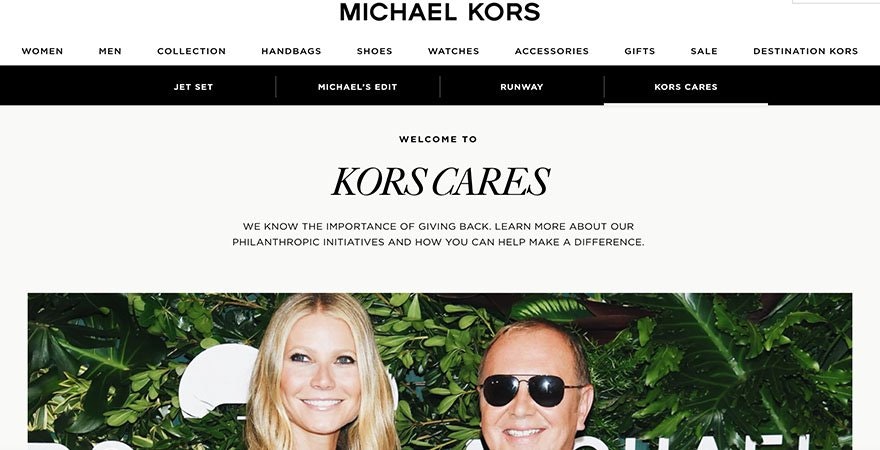
Socially Responsible Marketing Tips:
Pick the social cause that resonates with your customer base. About 90% of consumers say they’ll boycott a company whose corporate social responsibility isn’t aligned with their values. What are your customers passionate about? You can send a quick survey with 3 or 4 suggestions to choose from to help pick the right cause for your brand. To come up with 3 or 4 suggestions, ask your employees which causes they believe in. If your employees are passionate about your brand, they may have some great suggestions.
Try different ways of incorporating your social responsibility. Tom’s donates a pair of shoes to those in need for every pair of shoes purchased. That means, every customer who purchases from them directly helps another person in need. To do something like this, you’d need to price your products at a higher retail price to accommodate the cost of the two products. However, Tom’s strategy is also a powerful marketing tool as it shows the impact each customer makes with a single purchase. It can also help increase higher average order value for those who are passionate about the cause.
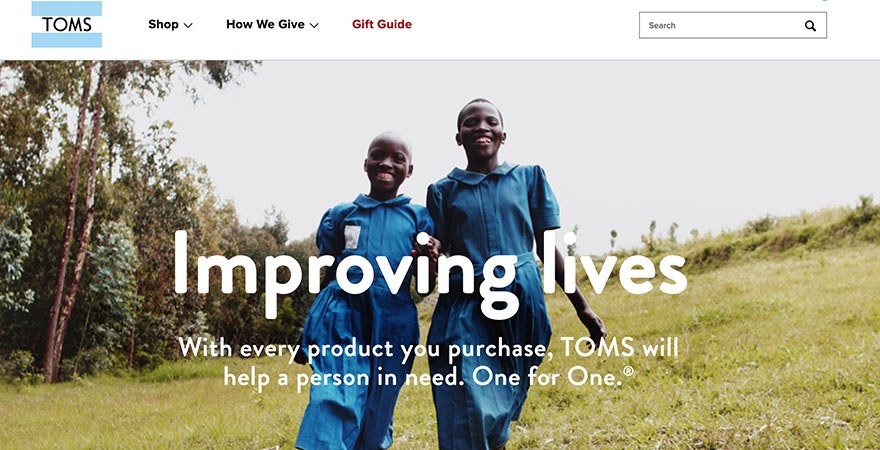
Disney practices social responsibility through its philanthropy and with a focus on the environment. In 2016, they donated over $400 million to nonprofit organizations. They also donate millions of books to schools. When it comes to the environment, they are currently reducing the emissions and are striving to reduce it by 50% by 2020. They’re also focused on conserving water, reducing waste, and more.
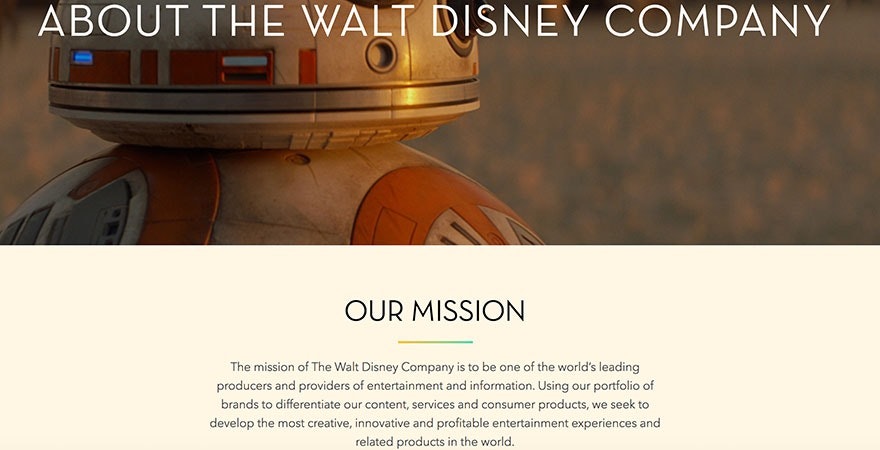
Camilla donates $1 for every order made on their store. While $1 may not seem like a lot, it gives two healthy meals to someone in need.
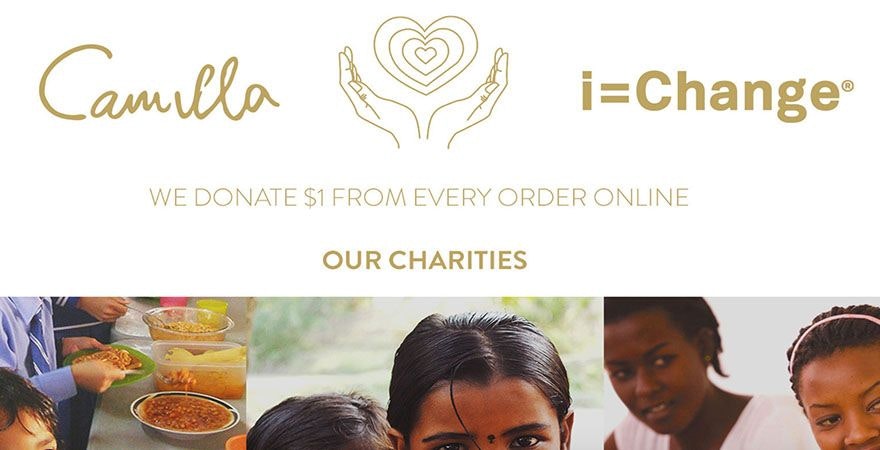
Apple includes a list of links for their social responsibility on the footer of their website. From accessibility to inclusion and diversity, they practice social responsibility in a number of ways. Their accessibility page includes a video and a video transcript for those who are hard of hearing. Their products are also inclusive. For example, the Apple Watch tracks number of pushes made in a wheelchair instead of steps for those who can’t walk. They also include progress reports for their environmental projects. And showcase how their company is diverse with employee stories.
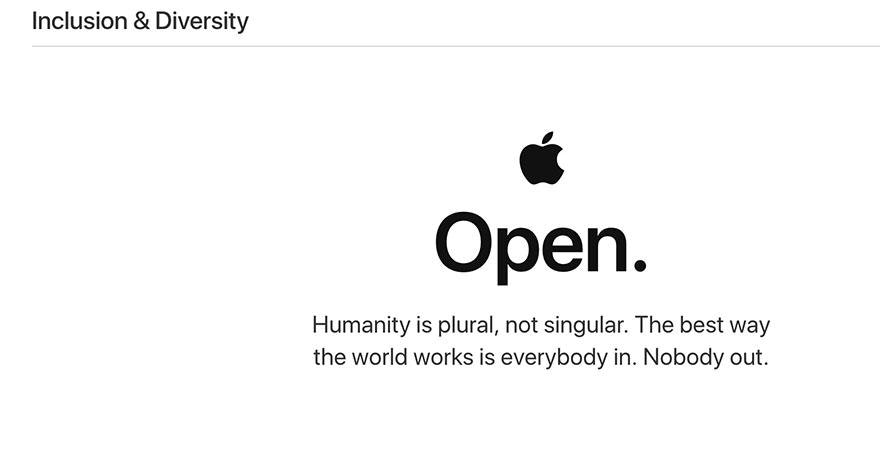
Promote your corporate social responsibility program. When you donate a large sum to a charity, contact the media and let them know. If your cause is tied in with an awareness month, host a sale where you donate a portion to charity and share it on social media. For example, if your cause is to help combat breast cancer, in October which is National Breast Cancer Awareness month, host different sales and promotions where you’ll donate a percentage to charity. You might even add a free breast cancer awareness bracelet with purchase for your customers. Send an email out to your customers to let them know about the cause related sales.
Style Saint showcases their social responsibility on their product listing pages. When a customer hovers over a product photo, they’ll see how the brand is socially responsible. You’ll see the number of ethical hours paid for that product. It also mentions the number of sustainable yards of fabric that were created. Lastly, it lists the number of gallons of water saved. The product page also lists these details. Even the product descriptions mention how sustainable the materials are in the description and why they’re a better option over more common fabrics.
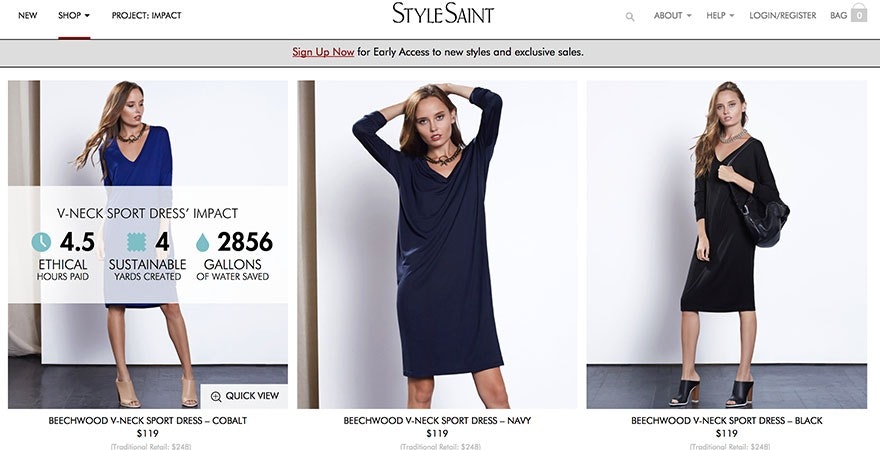
Volunteer your time. While financial donations are always appreciated, showing that your brand also takes the time out to get out in the trenches for a cause shows how much you care. Take pictures showing your volunteer work to share on social media. Let customers know how you donate a percentage to the cause.
Social Responsibility Tools:
Seed the Change helps ecommerce brands start a corporate social responsibility program. If your brand wants to be environmentally conscious, the brand plants a tree for every product sold on your website. Each tree planted costs your brand 60 cents. Brands using this service have seen a 35% conversion rate boost. It only takes about 10 minutes to have this up and running on your store.



